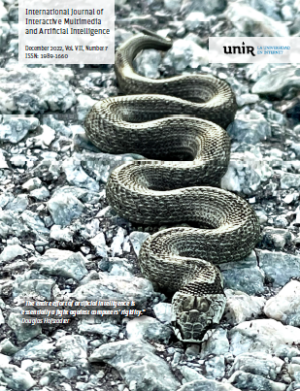Empirical Analysis of Ethical Principles Applied to Different AI Uses Cases.
DOI:
https://doi.org/10.9781/ijimai.2022.11.006Keywords:
Artificial Intelligence, Ethics, Ethical AI, Trust, Digital TransformationAbstract
In this paper, we present an empirical study on the perception of the ethical challenges of artificial intelligence groups in the classification made by the European Union (EU). The study seeks to identify the ethical principles that cause the greatest concern among the population, analyzing these characteristics among different actors. The main study analyses the difference between Information and Communications Technology (ICT) professionals and the rest of the population. Along with this study, we conducted a gender study; in addition, we studied differences between university students, classified as future professionals who can work in Artificial Intelligence, and other university students. We believe that this work is a starting point for an informed debate in the scientific community and industry on the ethical implications of artificial intelligence based on the classification of ethical principles made by the EU, which can be extrapolated to any analysis carried out on the use of data to apply them in algorithms based on Artificial Intelligence.
Downloads
References
European Commission. Artificial Intelligence for Europe, 2018. Accessed: Jun. 24, 2022. [Online]. Available: https://eur-lex.europa.eu/legal-content/EN/TXT/?uri=COM%3A2018%3A237%3AFIN
European Commission, Directorate-General for Communications Networks, Content and Technology. Ethics guidelines for trustworthy AI, 2019, Accessed: Jun. 24, 2022. [Online]. Available: https://data.europa.eu/doi/10.2759/346720
Future of Life Institute. ASILOMAR principles. Principles developed in conjunction with the 2017 Asilomar conference, 2017. Accessed: Jun. 24, 2022. [Online]. Available: https://futureoflife.org/2017/08/11/aiprinciples/
L. Floridi, J. Cowls, M. Beltrametti, R. Chatila, P. Chazerand, V. Dignum, C. Luetge, R. Madelin, U, Pagallo, F. Rossi, B, Schafer, P. Valcke, and E. Vayena, “AI4People—An ethical framework for a good AI society: Opportunities, risks, principles, and recommendations,” Minds and machines, vol. 28 no. 4, pp. 689-707, 2018.
A. Jobin, M. Ienca, and E. Vayena, “The global landscape of AI ethics guidelines,” Nature Machine Intelligence, vol. 1 no. 9, pp. 389-399, 2019.
UNESCO Ad Hoc Expert Group (AHEG). First Draft of The Recommendation on the Ethics of Artificial Intelligence, 2020. Accessed: Jun. 24, 2022. [Online]. Available: https://unesdoc.unesco.org/ark:/48223/pf0000373434
OCDE. Recommendation of the Council on Artificial Intelligence. 2019. Accessed: Jun. 24, 2022. [Online] https://legalinstruments.oecd.org/en/instruments/OECD-LEGAL-0449?_ga=2.248246209.790951165.1621927053-1872220198.1621927053
M. Graves, “Emergent Models for Moral AI Spirituality,” International Journal of Interactive Multimedia and Artificial Intelligence, vol. 7 no. 1, pp. 7-15, 2021.
J. F. Calderero, “Artificial Intelligence and Spirituality,” International Journal of Interactive Multimedia and Artificial Intelligence, vol. 7 no. 1, pp. 34-43, 2021.
O. Krüeger, “The Singularity is near! Visions of Artificial Intelligence in Posthumanism and Transhumanism,” International Journal of Interactive Multimedia and Artificial Intelligence, vol. 7 no. 1, pp. 16-23, 2021.
S. Duke, “Will AI make the gender gap in the workplace harder to close?” World Economic Forum. 2018. Accessed: Jun. 24, 2022. [Online] https://www.weforum.org/agenda/2018/12/artificial-intelligence-ai-gendergap-workplace/
T. Hagendorff and K. Meding, “Ethical considerations and statistical analysis of industry involvement in machine learning research,” AI & SOCIETY, pp. 1-11, 2021.
V. Vakkuri and P. Abrahamsson, “The Key Concepts of Ethics of Artificial Intelligence,” in IEEE International Conference on Engineering, Technology and Innovation (ICE/ITMC), 2018, pp. 1–6.
P. Louangrath, “Sample Size Calculation for Continuous and Discrete Data,” International Journal of Research & Methodology in Social Science, vol. 5 no. 4, pp. 44-56, 2019.
B. Malley, D. Ramazzotti and J. Wu, “Data Pre-processing,”. Secondary Analysis of Electronic Health Records, pp. 115-141, 2016.
X. Chu, I. F. Ilyas, S. Krishann and J. Wang, “Data Cleaning: Overview and Emerging Challenges,” in Proceedings of the 2016 International Conference on Management of Data, (SIGMOD), 2016, pp. 2201–2206.
D. N. Dago, G. A. J. Kablan, K. A. Alui, H. D. Lallié, D. Dagnogo, N. Diarrassouba and M. Giovanni, “Normality Assessment of Several Quantitative. Data Transformation Procedures,” Biostatistics and Biometrics, vol. 10 no. 3, pp. 51-65, 2021.
D L. A. Shalabi, Z. Shaaban and B. Kasasbeh, “Data Mining: A Preprocessing Engine,” Journal of Computer Science, vol. 2 no. 9, pp. 735-736, 2006.
R. M. West, “Best practice in statistics: The use of log transformation,” Annals of Clinical Biochemistry, vol. 59 no. 3, pp. 162-165, 2022.
A. A. Al-Babtain, I. Elbatal, C. Chesneau and F. Jamal, “Box-Cox Gamma-G Family of Distributions: Theory and Applications,” Mathematics, vol. 8 no. 10, pp. 1801, 2020.
G. Box and D. R. Cox, “An analysis of transformations,” Journal of the Royal Statistical Society: Series B (Methodological), vol. 26 no. 2, pp. 211-243, 1964.
J. Osborne, “Improving your data transformations: Applying the Box-Cox transformation,” Practical Assessment, Research, and Evaluation, vol. 15 no. 1, pp. 12, 2010.
N. Ishak and S. Ahmad, “Estimating Optimal Parameter of Box-Cox Transformation in Multiple Regression with Non-normal Data,” in Conference on Science, Technology and Social Sciences (RCSTSS 2016), Singapore, 2018, pp. 1039–1046.
The jamovi project (2021). jamovi (Version 2.2) [Computer Software]. Retrieved from https://www.jamovi.org
N. Altman and M. Krzywinski, “Points of significance: interpreting P values,” Nature Methods, vol. 14 no. 3, pp. 213-215, 2017.
R. L. Wasserstein and N. A. Lazar, “The ASA statement on p-values: context, process, and purpose,” The American Statistician, vol. 70 no. 2, pp. 129-133, 2016.
R. Nuzzo, “Statistical errors,” Nature, vol. 506 no. 7487, pp. 150-152, 2014.
J. Cohen, Statistical power analysis for the behavioral sciences, Lawrence Erlbaum Associates, Publishers, 1988.
D. Lakens, “Calculating and reporting effect sizes to facilitate cumulative science: a practical primer for t-tests and ANOVAs,” Frontiers in psychology, vol. 4, pp. 863, 2013.
Downloads
Published
-
Abstract304
-
PDF101









